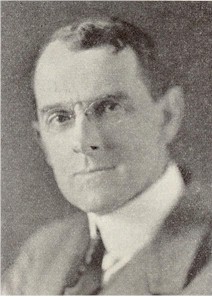
John B. Whitehead
Electrical Engineering has the distinction of being the oldest engineering discipline at Johns Hopkins. Henry Rowland, the University’s first professor of physics, was preeminent in the field of electricity and its practical applications and the University’s two-year program in Applied Electricity developed under his direction.
Decades later, the University determined that electrical engineering should be one of the three disciplines offered in the fledgling engineering department.
John B. Whitehead–BE 1893, BA 1898, and PhD 1902–assumed leadership of the new electrical engineering program in 1913 and was the first professor of electrical engineering.
Another early leader in electrical engineering was William B. Kouwenhoven, the “father of CPR”, who joined the faculty in 1914. He chaired the department for 12 years and went on to become dean of the school of engineering. Ferdinand Hamburger Jr. succeeded Kouwenhoven as department chair from 1958 to 1971.
Since 1970, the Department of Electrical Engineering has been active in numerous facets of the field including biomedical applications, quantum electronics, and communications sciences. William Huggins followed Hamburger as department chair and developed the study of computer science as an interdisciplinary program in conjunction with the departments of Statistics and Operations Research. In 1981, the department expanded to include computer science, becoming the Department of Electrical Engineering and Computer Science. It was a short-lived merger, however, as the computer science program became an independent department in 1986. The Department of Electrical and Computer Engineering emerged, with Willis Gore ’48, PhD ’52, as chair.
In the late 1980s, a cadre of new faculty extended the department’s teaching and research capabilities with interests in integrated electronics, photonics, imaging and speech processing, information science, and systems and control.
Today, Whiting School faculty remain on the cutting edge of their respective areas, addressing topics such as devices to aid the disabled, smart surgical tools, nanoenergy, neural computation, robotics and medical imaging.